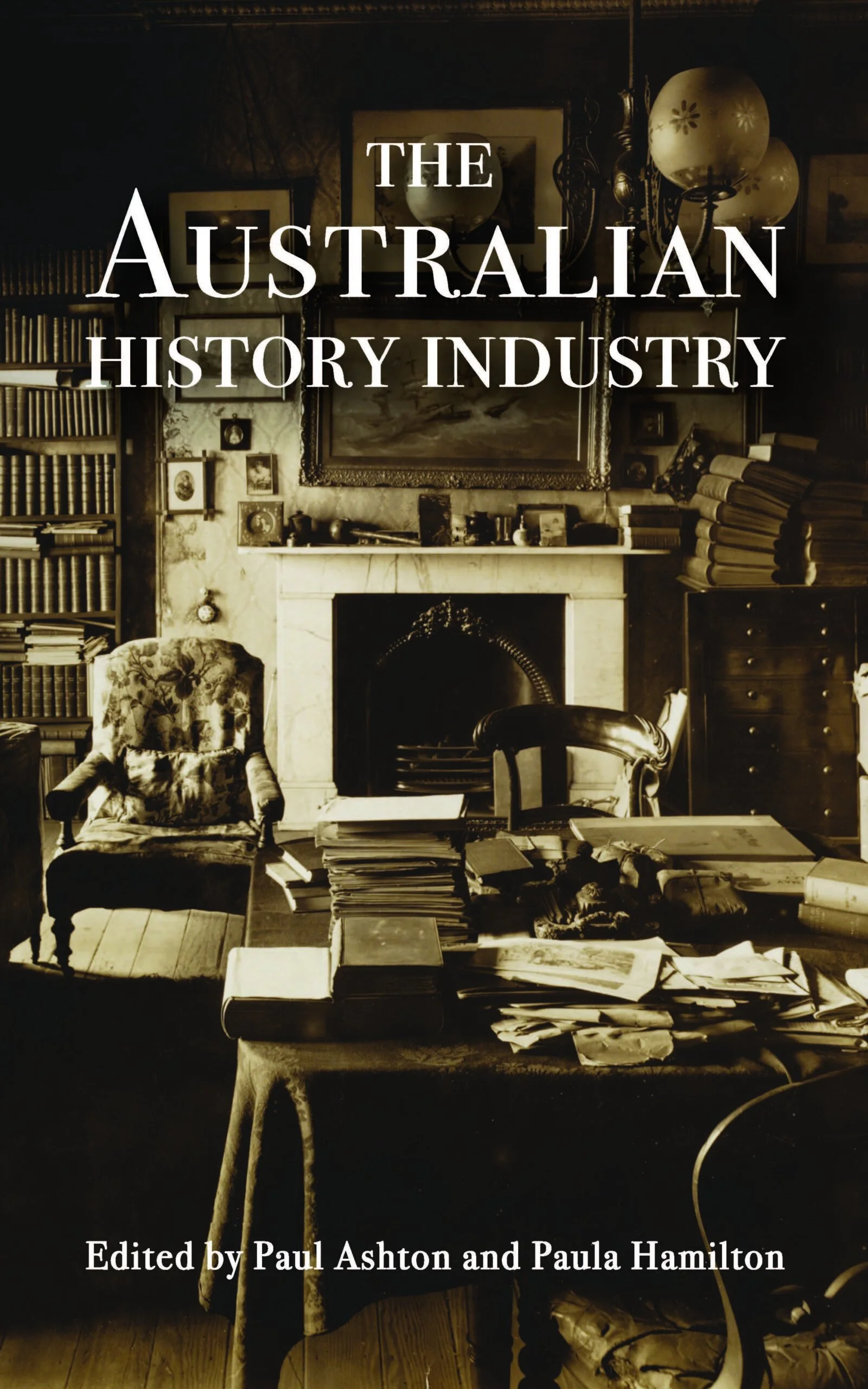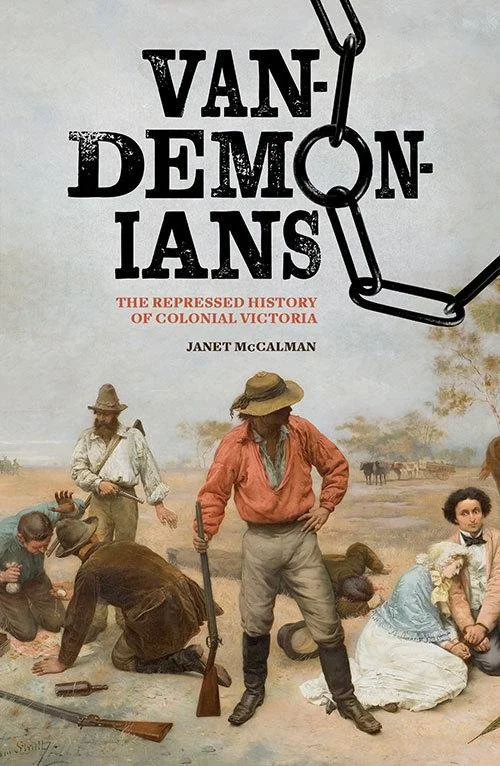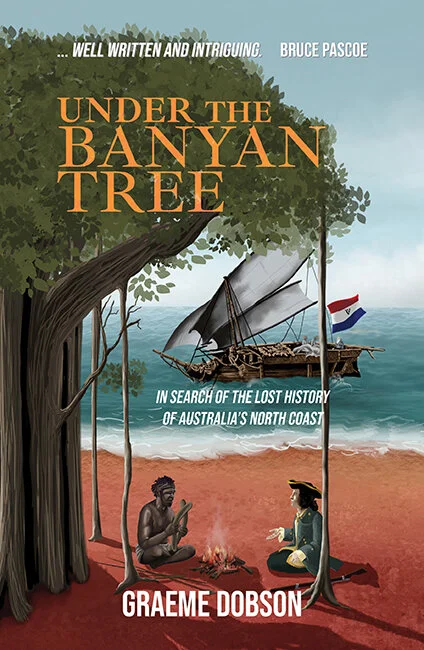The Australian History Industry
EDITED BY PAUL ASHTON & PAULA HAMILTON
In twenty-two chapters divided into five parts, the twenty-six authors of The Australian History Industry have covered a breathtaking array of how history is produced in Australia. It is a useful introduction for graduate historians who might wish to work in the field and should prompt vibrant discussion between historians in all corners of the discipline.
Read More
Trailblazing Women of Australian Public Broadcasting 1945-1975
KYLIE ANDREWS
Kylie Andrews’ investigation into the ABC during its transition into television focusses on four trailblazing women producers – those whose job was to bring together programming ideas, technical production, and the sourcing of talent and locations. Andrews’ purpose was to uncover the unsung backroom women of ABC productions. While media production roles were considered at the time to be beyond women due to their technical nature, each of these four women proved this to be a fallacy.
Read More
Lessons from History
CAROLYN HOLBROOK, LYNDON MEGARRITY, DAVID LOWE (EDITORS)
Since this blog started, we have published 30 reviews.* Among its offerings, it is striking to see more and more stories about encounters – too often violent – with Australia’s First Nations. Most of these stories are told by professional rather than academic historians. How history is written is another recurring theme, one that coincides with my aim as the blog editor of encouraging succinct, engaging distillations of current work. We need our history-making to be read! Lessons from history makes the same point, urging historians to engage with policy and to bring history to the fore of confronting contemporary challenges.
Read More
Making Australian History
ANNA CLARK
Making Australian History is essentially about the history of history in Australia – how it has shaped our national identity and how history has been shaped. An ambitious project, which Anna Clark admits that she struggled with. She found a way to structure the book during walks in the Dyarubbin-Hawkesbury region of New South Wales, where she came across the markings of colonial surveyors near Aboriginal rock art, including one that depicted the outline of a woman in a crinoline dress. This confronting sense that timeless layers of history-making existed, provided her with a novel way to structure the book.
Read More
Dancing Before Storms: Five Revolutions that Made Today’s World
ROBERT T HARRIS
Dancing Before Storms is thought provoking. It recounts the expression of discontent in the revolutions of the 18th and 19th centuries, as well as that of our current century, which again highlights widening gaps in equity and equality. Whether the current malaise will result in political revolution is yet to become clear; attempts to predict it based on the features of another time in history are fraught with difficulty.
Read More
Burning Ambition – The Centenary of Australia-New Zealand Football Ashes
NICK GUOTH & TREVOR THOMPSON
Burning Ambition begins with a wonderful coincidence. In May 1904 the Federation Internationale de Football Associations – otherwise known as FIFA – was brought to life in a back room in Paris. At the same time, in Sydney, newspapers invited local players of the round-ball game to selection trials for a tour of New Zealand. This sporting history offers a glimpse into the idea of Australasia as one that gained, then lost, traction in the late nineteenth and early twentieth centuries.
Read More
An uncommon hangman, the life and deaths of Robert ‘Nosey Bob’ Howard
RACHEL FRANKS
Crime and punishment: the irresistible twin themes for novelists and film makers, as well as lawmakers and historians. Rachel Franks brings to the story of hangman Nosey Bob Howard the craft of both crime fiction and history, revealing stories of the executioner and his ‘patients’. Her approach raises questions for professional historians about how to write compelling narrative history.
Read More
Telling Tennant’s Story: the strange career of the great Australian silence
DEAN ASHENDEN
Tennant Creek is in the centre of the Northern Territory. In this book, the small town and its place in Warumungu Country, on the Stuart Highway and the Telegraph line, and on the route to prominence for several highly influential thinkers, is right at the centre of Australian history, policy and politics.
Read More
What is History Now? How the Past and Present Speak to Each Other
HELEN CARR AND SUZANNAH LIPSCOMB
Mention the historian E H Carr to a client of a professional historian, and it is a fair bet that the name will arouse suspicion. The apparent Soviet over-sympathies of the proclaimed ‘relativist’ historiographer in What is History? (1961) were actually an attempt at historical objectivity during the Cold War. So said the great-granddaughter of the lustrous historian, the lead editor in this informative collection of essays connecting the past and present in what we understand as ‘history’.
Read More
Four Years in a Red Coat: The Loveday Internment Camp diary of Miyakatsu Koike
TRANSLATED BY HIROKO COCKERILL
EDITED BY PETER MONTEATH AND YURIKO NAGATA
‘The rising sun shone through clouds scattered across the blue sky. What a beautiful dawn it was! […] We were absorbed in conversation in our tent all day. Unlike the outside world, we had no job to engage us. We had nothing to do but kill time.’
Read More
Spies and Sparrows: ASIO and the Cold War
PHILLIP DEERY
Spies and Sparrows is extensively researched, the archival plumbing being deep and comprehensive. It links social history with political history, the individual with the institutional, the local with international alliances. Significantly, it follows the command that all historians should follow – the obligation to communicate, to make the narrative clear and the text readable. It is an antidote to the terminal dullness of Australia’s recent official histories.
Read More
The Battle of One Tree Hill: The Aboriginal Resistance that Stunned Queensland
RAY KERKHOVE & FRANK UHR
Accounts of frontier violence have grown since Bill Stanner’s criticism in the 1968 Boyer lectures of Australian history’s wilful ignorance of Aboriginal people and Aboriginal history. Ground-breaking works by Henry Reynolds and Lyndall Ryan have revealed the violence and the complicity of colonial authority, and more recent texts by historians such as Stephen Gapps have shown the resistance of Aboriginal people to invasion. The Battle of One Tree Hill by historians Ray Kerkhove and Frank Uhr sits firmly alongside these histories. It tells of the success of a range of Aboriginal groups in the Darling Downs and Lockyer region, working together to defeat colonists in the Battle of One Tree Hill.
Read More
Vandemonians: The Repressed History of Colonial Victoria
JANET MCCALMAN
I suspect that few readers will be aware of the complex set of outcomes for the ex-convicts from the south. Indeed, rectifying this lack of awareness is the impulse behind this work … I believe that Vandemonians is a telling example of how traditional research methods can be married with genealogical databases to trace the course of an individual life.
Read More
Gudyarra: The First Wiradyuri War of Resistance - The Bathurst War, 1822-1824
STEPHEN GAPPS
This book, along with other recent works including Gapps’ previous book The Sydney Wars and Mark Dunn’s The Convict Valley, show us that careful and inclusive scholarly research into the history of New South Wales can produce accurate, useful and insightful analysis based on both archival, online and oral sources, and on previously published work. There will always be gaps and silences, and we may never know the name of every Aboriginal person who was involved, or the exact numbers who perished defending their country, but we can now begin to see and understand our own history from both sides of the frontier. The same for other parts of Australia is needed.
Read More
Australia & the Pacific: a history
IAN HOSKINS
This is an important book that will make waves. In Australia & the Pacific, Ian Hoskins ventures into pointedly political waters, particularly the autonomy of First Nations peoples and the environmental implications of Australia’s extractive industries.
Read More
Broken Spear: The untold story of Black Tom Birch, the man who sparked Australia’s bloodiest war
ROBERT COX
Australians are gradually discovering and appreciating their frontier war history. These dark but fascinating events form the birth of our nation, and the lived experience of our ancestors. Even so, they have been sidestepped for decades, in the hope of presenting our continent’s past as uniquely bloodless.
Read More
True to the Land: A History of Food in Australia
PAUL VAN REYK
True to the Land joins Reaktion’s Foods and Nations series, which aims to apply a historical and geographical lens to ‘how food production and consumption of food developed, and how they were influenced by the culinary practices of other places and peoples’.
Read More
Under the Banyan Tree: In search of the lost history of Australia’s North Coast
GRAEME DOBSON
Under the Banyan Tree is not about the botanical species. Instead, it is the account of a journey through our nearest northern neighbours – nations that rarely appear in Australian histories – and stories of trade with the Yolngu in Arnhem Land. The book offers a swashbuckling romp through changing cultures around the region.
Read More
A Historian Against the Current: The Life and Work of Austin Gough
DON LONGO
Longo, who was a student of Gough’s in the 1970s, must have read widely in his attempts to understand Gough’s thinking, and his biography has a clear chronological development from Gough’s birth in 1926.
Read More
A Paper Inheritance
DYMPHNA STELLA REES
‘[T]he best memoirists allow their life experiences to shed light on a culture, a historical moment, a time, a place, a social problem, a political issue...’ said Natalia Rachel Singer, a professor of English. While the memoir is usually categorised as creative non-fiction, when it does as Singer applauds, it can illuminate the historical record. Dymphna Stella Rees has made such a contribution with her actual paper inheritance, out of which she has woven a compelling story of Australia’s literary life from the 1930s on.
Read More




















